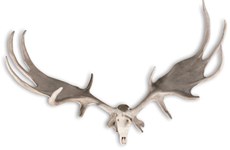Offered at an Islamic and Oriental auction on October 7, estimated at £30,000- 50,000, it sold via a dealer to a UK buyer.
Lustre wares and large architectural elements played a prominent role in the revival of the ceramic industry in Persia after the hiatus that followed the Mongol invasion in the 1220s. Pottery made in Kashan during the Ilkhanid period (1256-1353) brought both a fresh technical approach and a new design vocabulary.
Tiles such as this, measuring around 18in (46cm) square with a thickness of around 2in (5cm), would originally have been part of a tomb-marker that covered the grave of a high-status individual.
They indicated that the deceased had been buried in accordance with Islamic law, facing the direction of the Ka’bah shrine in Mecca. The inscription in lustre along the profile of the arch is the al-Fatihah (The Opening) from the first surah of the Qur’an. The text in blue below is from the second surah.
A very similar tile dated to the beginning of the Ilkhanid period is on view in the Jameel Gallery in the Victoria and Albert Museum.
This is the second monumental tile of this type that John Nicholson’s has sold in as many years.
In May 2019 the auction house sold a similar tile c.1300 that probably formed part of a central section from a monumental mihrab, the niche in the wall of a mosque that indicates the direction of the Ka’bah. It sold at £95,000.
Another, accompanied by a copy of the original purchase invoice dated March 2, 1922 sold for a mighty £413,000 as part of a Sotheby’s Arts of the Islamic World sale in 2016.















